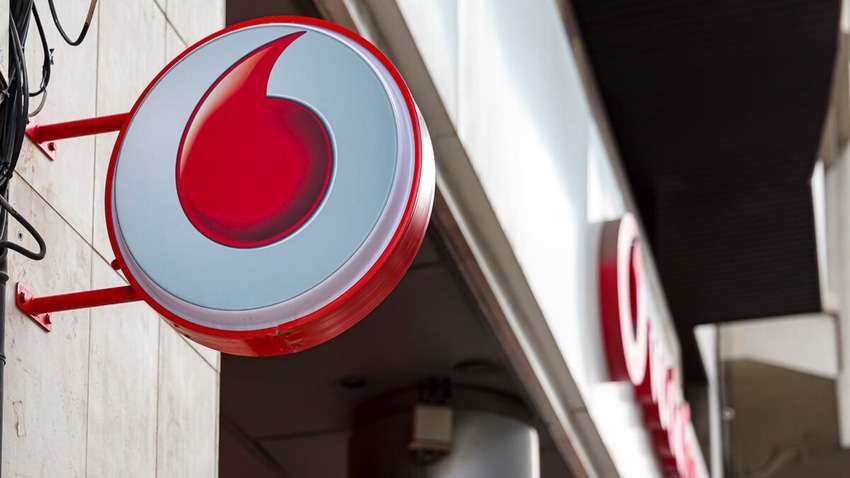Ericsson could be the biggest loser if Vodafone and Three merge
The merged company expects to invest less in capex each year than the operators have recently spent as standalone players.

Börje Ekholm, Ericsson's boss, had plenty of praise for the merger plans announced this week by Vodafone and Three, two of the UK's four mobile network operators. "Scale matters!" he began a LinkedIn post, adding the exclamation mark to show he really means it. "Consolidation is crucial to ensure that operators have sufficient scale to build out future infrastructure. We encourage the UK authorities to approve this deal quickly and without imposing any major remedies."
Philosophy aside, Vodafone and Three represent two important European customers for the Swedish vendor, making it unlikely that Ekholm would air any public criticisms of them. His broad logic is hard to fault, too. A multitude of weak operators spending niggardly amounts on their networks is a worse scenario than having one or two big players with the financial muscle to invest. Yet in the short term, the tie-up between Vodafone and Three is probably a bigger threat to Ericsson than it is to any other stakeholder.
The Swedish vendor accounts for just about the entirety of Vodafone's 18,000-site radio access network (RAN) excluding about 6,000 of those sites currently served by Huawei. Vodafone is slowly phasing out the Chinese vendor to comply with government orders, but the main replacement it has identified for about 2,500 sites is Samsung, touting a concept called open RAN. Given Vodafone's controlling stake in the joint venture, and the strategic importance Vodafone Group has attached to supplier diversity, this network plan probably won't change after a merger.
What makes change even less likely is Three's growing reliance on Ericsson across its own footprint of about 17,400 sites. Having started out with a 3G network built by Nokia, it used Samsung to roll out 4G, picked Huawei for 5G and then quickly pivoted to Ericsson after the government announced restrictions. The Nokia 3G network is to be switched off soon, however, and Ericsson is replacing Samsung in 4G as well as Huawei in 5G. This all means Three is on course to end up with a 4G and 5G network built solely by Ericsson.
Maintaining parallel networks at great cost would negate the benefits of a merger, and so V3 – as we'll call it – will probably dismantle Three's Ericsson network in areas Vodafone has earmarked for open RAN alternatives to the big Nordic vendors. While those areas amount to only 2,500 sites today, Vodafone has previously suggested it will extend open RAN to all 6,000 sites currently served by Huawei.
However, V3 won't need two overlapping sites to cover the same street, any more than it will need two adjacent stores or two core network managers. Post-merger, the site total is likely to be higher as the companies address coverage gaps that previously existed in their separate footprints. But it won't be 35,400, the sum of their current site numbers, unless they plan to lose money. Ericsson's addressable market, accordingly, will shrink from about 29,400 sites – Three's 17,400 plus Vodafone's roughly 12,000 non-Huawei sites – to a much lower amount.
Core, blimey
The other concern for Ericsson is in the core, the software-based control center of the network. Vodafone has been shifting from Cisco to Ericsson as a core network supplier and ultimately plans to end the Cisco relationship and run everything on a converged Ericsson core. But Three relies on Nokia and has spent considerable time and money on transferring systems and customers over to Nokia's latest platform. Again, unless V3 intends to run two cores in parallel and forego the "synergies" of using a single platform, one provider will eventually have to be dropped. Given V3's heavy exposure to Ericsson on the RAN side, Nokia is perhaps likelier to survive in this domain.
Ekholm seems confident that a beefier telco will be a much bigger spender than its puny parents were, but that is simply not in the script. While V3 does intend to spend more than either Vodafone or Three did separately, its capex is projected to fall when compared with the overall investments of the two operators.
This is all shown in their paperwork about the deal. Last year, Vodafone pumped about £766 million (US$980 million) into capex, while Three invested £743 million ($950 million). Added together, that makes £1,506 million ($1,926 million), a 2% increase on the year-earlier figure. Yet the operators have said their combined capex over a ten-year period will come to £11 billion ($14.1 billion) after a merger. Annualized, that works out at just £1,100 million ($1,407 million), about £400 million ($512 million) less than Vodafone and Three spent on capex last year.
None of this is much surprise. Vodafone and Three would not be trying to merge if they did not think they could slash total costs. And most suppliers would probably be more comfortable in the long term with a small number of fat customers than dozens of anorexic ones. But one immediate consequence of this deal could be a nasty squeeze for Ericsson.
Related posts:
— Iain Morris, International Editor, Light Reading
Read more about:
EuropeAbout the Author(s)
You May Also Like












